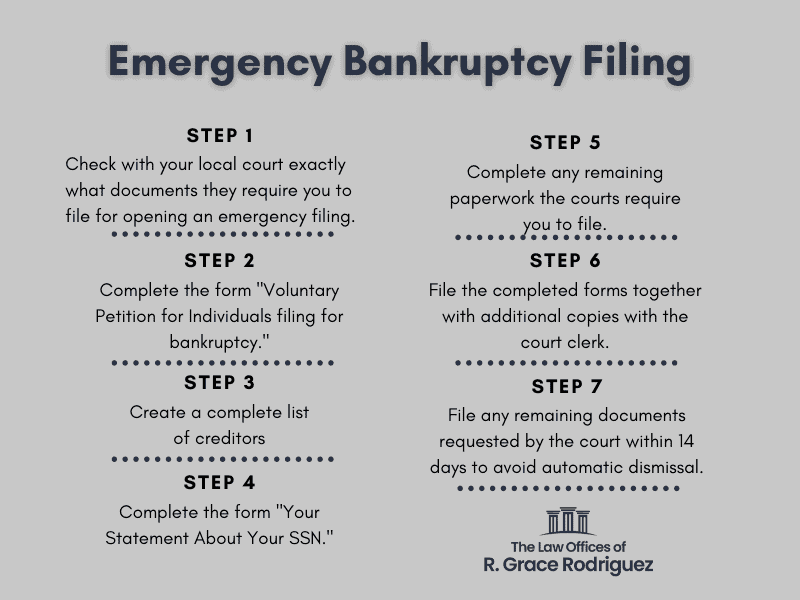Sometimes you have to halt the creditor’s actions fast. One way to do this is to file for bankruptcy. When you open a bankruptcy case, the court system puts a hold on your assets while the case is open. This way, you can prevent most creditors from taking further action against you while the case is open.
Filing for bankruptcy is a time-consuming process. If time is of the essence, you might not have the time to complete a court filing. You can file your case online, as an online bankruptcy filing or emergency bankruptcy filing. This procedure is not the full filing, but a so-called skeleton filing, which is enough to get the automatic hold on your assets. Afterward, when the hold is in place, you can complete the filling and supplement the missing documents.
Filing for Emergency Bankruptcy Online
When you face time-sensitive matters such as foreclosure, repossession, wage garnishment, or lawsuit actions, you might not have time to file a complete lawsuit. The paperwork to complete a bankruptcy filing in court can often consist of upwards of fifty documents or more to complete.
This issue is where online emergency filings come into play. You can access your filing anytime around the clock and file only the bare minimum to get the case opened and your assets put on hold. To do this, you only have to file a few accessible forms, including:
- The bankruptcy petition (This is the form containing the general information about your filing, such as identifying what chapter you’re filing for and other essential information)
- A list of creditors (here you provide the information about which creditors will be listed in bankruptcy with identifying information such as name and address)
- A certificate proving that you have requested a waiver claim and completed the required credit counseling
- Legal form B121 (this is a statement about your social security number)

After You File Your Emergency Bankruptcy
When you file emergency bankruptcy, you have 14 days to file the additional documents. If you fail to do this, the case will be automatically dismissed. You should always check if your local court requires other forms to ensure a complete filing. This information will be available on your local court website.
Filing an Emergency Bankruptcy in 7 Simple Steps
- Check with your local court exactly what documents they require you to file for opening an emergency filing.
- Complete the form “Voluntary Petition for Individuals filing for bankruptcy.”
- Create a complete list of creditors. Here you include contact information such as name and address on all outstanding debt; this includes collection agents, sheriffs, attorneys, banks, or brokerages.
- Complete the form “Your Statement About Your SSN.”
- Complete any remaining paperwork the courts require you to file. Make sure you check if there are specific papers required by your jurisdiction. Failure to file the correct documents might cause your case to be dismissed.
- File the completed forms together with additional copies with the court clerk. Be sure to attach any fee payments or a fee waiver application. Keep copies for your records as a backup.
- File any remaining documents requested by the court within 14 days to avoid automatic dismissal.
